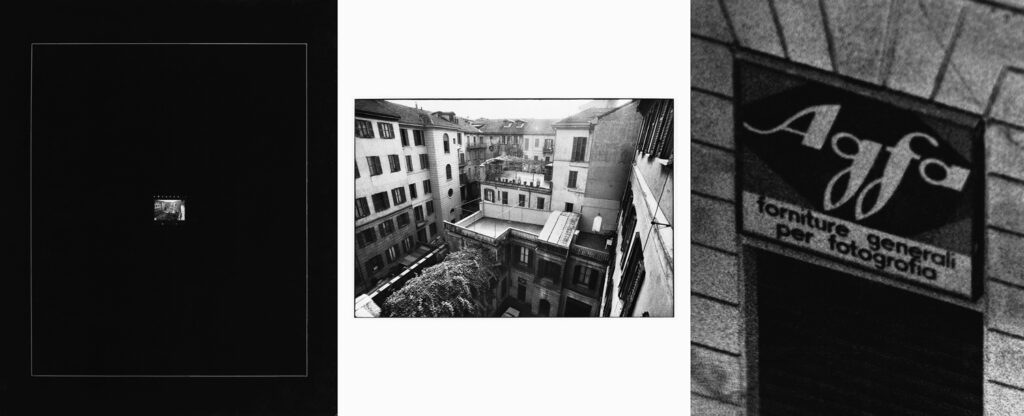6. THE ENLARGEMENT.
FROM MY WINDOW REMEMBERING THE WINDOW IN LE GRAS, 1972
September 16. 1824, Joseps Nicéphore Niépce writes to his brother Claude: “I am happy to be able to finally tell you that… I succeeded in taking a photograph of nature that is so good I couldn’t ask for more… I took the picture from your room on the side looking out onto Le Gras.”
Every now and again I go to the window and look down at the courtyard. I knew there was a photography supplies store there and I was well aware of the sign: “Agfa forniture generali per la fotografia” (Agfa General Suppliers for Photography), but I had never related all this to the only surviving photograph by Niépce. I used Agfa film to photograph the courtyard, and I printed the photogram so that you could read the sign Agfa running along the edge of the film on the contact sheet. Then I enlarged it until you could just glimpse, small in size and at the bottom, the business sign. Lastly, I chose that detail, the sign, to emerge as the only element of the photo. In this case the medium, the film, the object and the name, become the subject. In the photogram you can see the courtyard but not the sign, and the name Agfa is not on the image but on the film: the advertising sign, in the second half of this
sequence, begins to emerge. Lastly, in the third image the sign has been enlarged as much as possible and it is practically made up of clumps of silver salts. In other words, the light-sensitive surface is made visible in its structure: the silver salts are what compose the name Agfa that tells us what the photo has become, commercially:
a means of prevarication, of pseudo-information, in any case exactly the opposite of what Niépce, in honing the
sensitive surface, intended to do.
